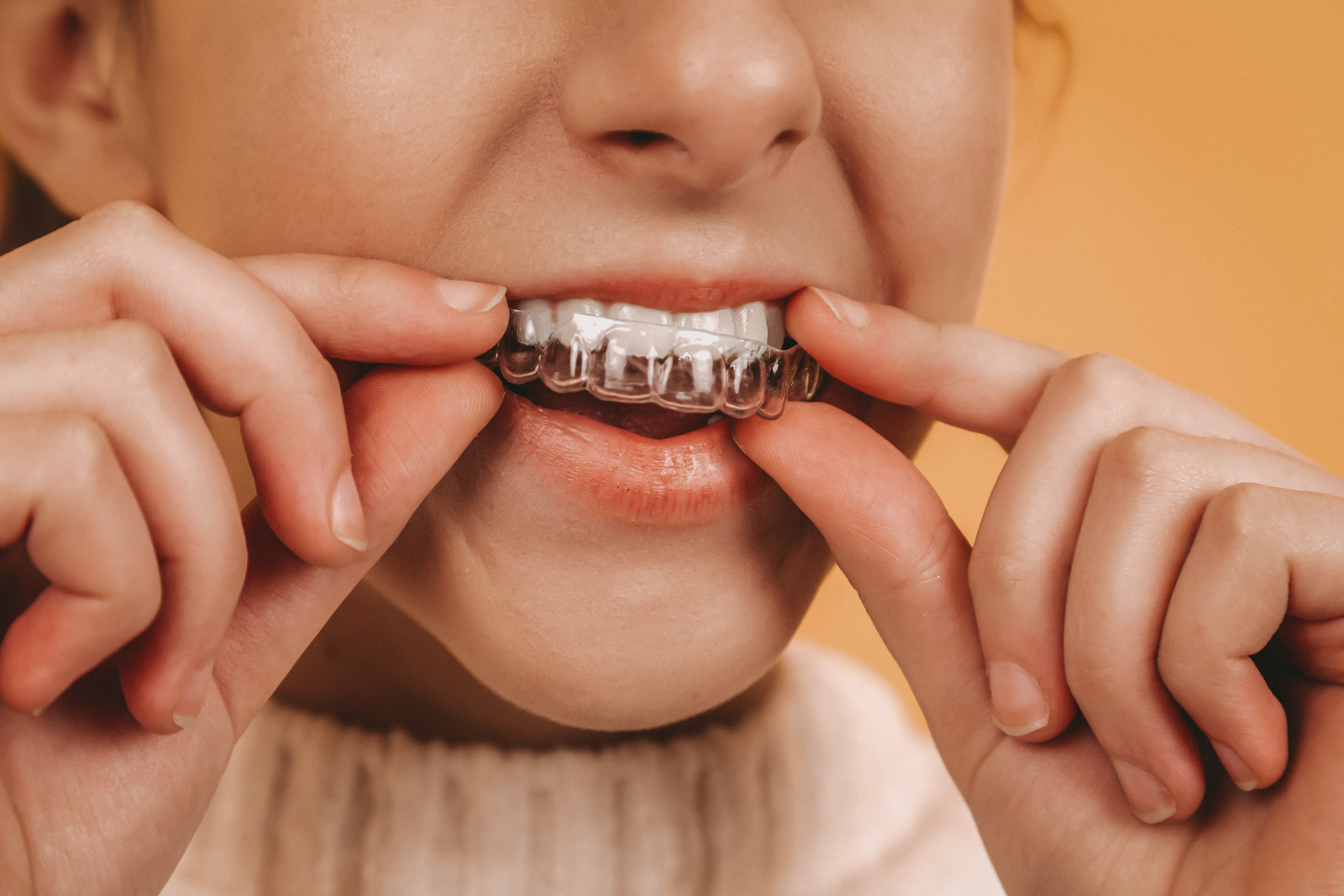Transparent braces
Clear braces, also known as aligner treatment or invisible braces, are a modern alternative to traditional braces. They are particularly suitable for patients who value aesthetics and comfort.
Functionality
Treatment is carried out with transparent, removable plastic aligners that are customised. By gradually wearing different aligners, the teeth are gradually moved into the desired position. A new aligner is fitted every 1-2 weeks and the movement is planned with the help of a computer.
Benefits
- The aligners are virtually invisible and therefore inconspicuous in everyday life.
- They can be removed for eating and brushing teeth, which makes oral hygiene easier.
- They are usually less painful than fixed braces and do not cause any restrictions when eating.
Cons
- The costs are higher than for traditional braces.
- Aligners are not suitable for all misaligned teeth.
- Discipline is required for success, as the aligners have to be worn for 20-22 hours a day.
- They are only suitable from teenage years and are not suitable for children.
Suitable for
Aligners are ideal for mild to moderate malocclusions, gaps, crowding and slight bite defects.
Treatment procedure
The process begins with a 3D scan or impression of the teeth. The treatment is then planned with computer support and the customised aligners are made. Regular check-ups with the dentist or orthodontist ensure the success of the treatment. The duration of treatment is usually 6-18 months.
Costs
The cost of aligner treatment is between 3,000 and 7,000 euros. Statutory health insurance companies generally do not cover the costs, while private insurance companies often reimburse part of the treatment costs. Financing models offer additional flexibility.
Aligner treatment is an innovative method that represents an aesthetic and comfortable solution for many patients.

How long does aligner therapy take?
The duration of aligner therapy varies from individual to individual and depends on several factors, including the severity of the malocclusion, the complexity of the tooth movements, the daily wearing time of the aligners (ideally 20-22 hours) as well as the patient’s co-operation (compliance) and age.
Average treatment times
- Mild malocclusions: 6-12 months
- Moderate cases: 12-18 months
- Complex cases: Up to 24 months or longer
Treatment rhythm
The aligners are usually changed every 1-2 weeks and check-ups with the dentist or orthodontist take place every 6-8 weeks. On average, 20-30 pairs of aligners are required per treatment. In some cases, a follow-up correction (‘refinement’) may be necessary to achieve the desired result.
Optimal results
For optimal results, it is crucial to use the aligners consistently and for the recommended wearing time. Regular visits to the dentist and good oral hygiene are also important factors.
Aftercare
Once treatment is complete, a retainer is often used to stabilise the new tooth positions. At the beginning, the retainer is worn all day, later only at night. Regular check-ups ensure that the result is maintained in the long term.
Possible delays
Delays in treatment can occur if the aligners are worn irregularly, are lost or damaged. Unexpected tooth movements or additional necessary corrections can also extend the duration.
However, well-planned and disciplined aligner therapy offers an effective and manageable way of correcting misaligned teeth.
What does long-term retention mean?
Long-term retention is the process of permanently stabilising the tooth position after orthodontic treatment in order to secure the result achieved and avoid relapses (recurrences) to the old tooth position.
Basic principle
Long-term retention ensures that the teeth remain in their new position after treatment. Lifelong aftercare is recommended, as the teeth may tend to shift again over time.
Retention appliances
- Fixed retainers: A small wire is attached to the inside of the teeth, usually in the lower jaw (from tooth 3 to tooth 3). This is invisible from the outside, durable and requires no active co-operation.
- Removable retainers: These transparent splints are usually worn at night. They need to be replaced regularly and offer flexible application options.
Important aspects of retention
- Regular checks: Retention appliances should be checked regularly to detect damage at an early stage.
- Cleaning and care: Professional cleaning is recommended to maintain hygiene.
- Repairs: In the event of damage or changes, the devices must be adapted or replaced.
Duration of retention
Retention is generally required for life. It is particularly important in the first 2-3 years after treatment, as the teeth can move the most during this time. Immediately after treatment, the retainer is used more intensively, later often only at night.
Risks without retention
Without retention, there is a high risk that the teeth will move again and new crowding will occur. As a result, the treatment result may be lost and retreatment may be necessary.
Care and maintenance
Thorough oral hygiene is essential to keep the retention appliances clean. Regular check-ups at the dentist and timely replacement in the event of wear ensure the longevity of the retention.
Long-term retention is a crucial part of orthodontic aftercare and ensures that patients benefit from their treatment results in the long term.
